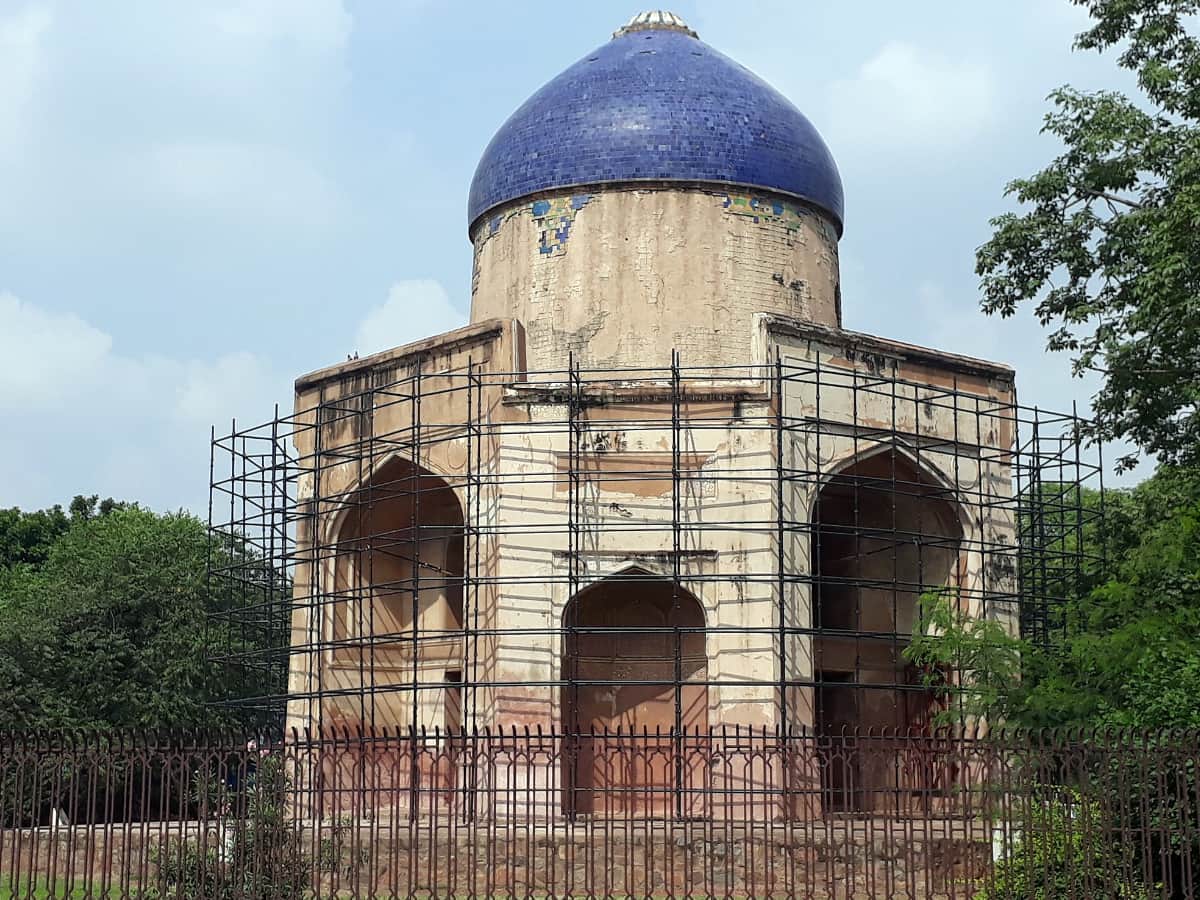 NEW DELHI: Sabz Burj, a 16th century double-domed Mughal-era monument in south Delhi’s Nizamuddin area, is all set to be restored using traditional material and techniques.
NEW DELHI: Sabz Burj, a 16th century double-domed Mughal-era monument in south Delhi’s Nizamuddin area, is all set to be restored using traditional material and techniques.
Conservation work has begun on the Archaeological Survey of India-protected heritage landmark, situated right opposite to the Humayun Tomb complex, with “generous funding” from a corporate firm, a senior official of a partnering agency said.
The ASI, Aga Khan Trust for Culture (AKTC) and consumer electricals firm Havells have joined hands for this project that is slated to be completed over a period of 18 months.
“Before beginning the actual conservation work, over the last three months, we did an extensive documentation of the structure, including 3D laser scanning to know the exact requirement,” CEO, AKTC, Ratish Nanda, said.
“Sabz Burj would be a major challenge for us, but the urban impact it will have after restoration would be huge, given the imposing structure sits in a street roundabout in the buffer zone of the World Heritage Humayun Tomb and in the vicinity of the historic Nizamuddin Dargah,” he said.
The octagonal tomb, said to be of a Mughal noble, has a striking architecture, including an inner dome encased in an elongated outer dome, whose top is covered with blue tiles.
Havells India is helping in the conservation work through its Corporate Social Responsibility (CSR) funding, and said, the company was “proud to join hands” on a project that seeks to restore a cultural heritage of the country.
“We (Havell) are doing illumination of the Humayun Tomb complex and we thought why not take it to the next-level. And, when we realized that local community is going to be involved with it, we decided to come on board,” CMD of Havells India Anil Rai Gupta told PTI.
The tiles, colored in shades of green yellow and light and dark blue, for the outer dome, are being hand-made for the restoration using “16th century techniques” by local craftsmen, Nanda said.
“The original 500-year-old tiles or its remnants that have survived, we are not touching them, because it’s antique,” he said.
The tomb is located at a busy traffic intersection on south Delhi, and “over six million people” cross this monument every year, the AKTC said.
“Most of us pass by it but we don’t stop by to admire or even wonder as we go by. This project seeks to restore in us that sense of wonder too,” Nanda said.
According to the AKTC, the 70-foot tall structure was built shortly after the Mughal armies defeated the Lodhi Afghan dynasty in 1526 AD.
“Very few monuments have a double-dome structures. In England, London’s St. Paul’s Cathedral is doubled-domed. Also, in the main ceiling of the tomb has painted artwork and not incised plaster work.
“It is in damaged condition and covered with chemical layering. We are trying to get in international experts on board to tell us how it can be done,” Nanda said.
Besides, multi-colored tiles, the early Mughal-era monument built with stone masonry, has elegant inlay work on its side walls, which the conservators seek to restore to original glory.
In early 20th century, it was brought under the ASI. The dome also had a finial on top, but it is not yet known, what was its size or what was it made of.-PTI







